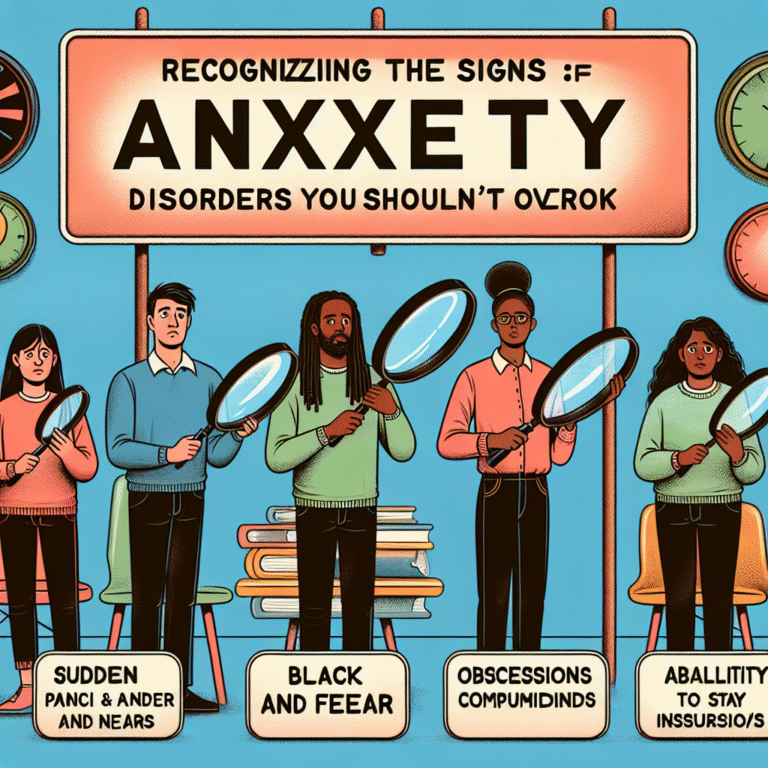
Navigating the Journey: Understanding the Essential Stages of Grief
Grief is an extraordinary, personal experience that affects everyone differently, and yet, it is universally comprehensible. Whether you have faced the loss of a loved one, a relationship, or even a job, understanding the phases of grief is crucial. By navigating the journey: understanding the stages of grief, you can equip yourself with knowledge that brings clarity in overwhelming times.
Introduction
Imagine standing on the shore of a vast ocean, watching waves of sorrow crash around you. Each wave represents a different emotion—a memory, a feeling, a moment. Sometimes the waters are calm, and other times they’re turbulent. This is what navigating the journey of grief feels like; it ebbs and flows, creating a landscape of emotional highs and lows.
The five stages of grief, conceptualized by Elisabeth Kübler-Ross, provide a framework for this tumultuous experience. Knowing these stages can lead you to healing, understanding, and ultimately, acceptance. This article takes you on a detailed exploration of these stages, provides real-world case studies, and offers actionable insights to help you—or someone you love—on their grief journey.
The Stages of Grief
1. Denial: The Initial Response
- Understanding the Stage
Denial acts as a buffer following the initial shock of loss. It is a protective mechanism to help us cope. During this stage, a person might isolate themselves, refuse to acknowledge the reality of the situation, or express disbelief.
- Carla’s Story
Carla lost her mother unexpectedly. In the weeks that followed, she refused to speak about her mother’s passing and even went about her daily routine as if nothing had changed. This reaction is normal—denial serves as a cushion from the shock, allowing us to process the emotions gradually.
- Analysis
Denial is often misconstrued as a negative emotional response; however, it plays a crucial role in beginning the healing process. It’s essential to allow time for this stage without judgment.
2. Anger: The Outburst of Emotion
- Understanding the Stage
Once the protective veil of denial lifts, feelings of anger can surface. This anger might be directed at others, oneself, or even the lost loved one. It’s essential to recognize that this is a natural part of navigating the journey: understanding the stages of grief.
- Jonathan’s Story
Jonathan was angry after losing his father to cancer. This anger manifested in heated arguments with family members and a pervasive sense of frustration. Joining a support group helped Jonathan realize that his anger was a normal reaction to grief.
- Analysis
The anger stage may feel overwhelming, but recognizing and expressing these emotions in a healthy way is vital. Finding outlets—like support groups, therapy, or creative expression—can channel this energy positively.
3. Bargaining: The ‘What Ifs’
- Understanding the Stage
In this stage, individuals may dwell on “what if” scenarios, contemplating how things could have turned out differently. This bargaining can take many forms, including praying for a different outcome or imagining ways they could have altered the situation.
- Maria’s Story
After losing her partner, Maria often thought she could have done something to avert the tragedy. She found herself making deals with herself—vowing to live a better life in exchange for her partner’s return.
- Analysis
Though bargaining might seem futile, it serves to illustrate how deeply we care about those we’ve lost. It reflects our desire to absolve ourselves of guilt and regain control over the uncontrollable events of life.
4. Depression: The Lonely Valley
- Understanding the Stage
Depression invites a profound sense of sadness and emptiness. This emotional state can manifest itself in various ways, such as feelings of hopelessness, fatigue, and despair. Unlike sadness—which can come and go—depression embodies a more pervasive sense of grief.
- Kevin’s Story
Kevin found himself withdrawing from friends and activities he once loved following his mother’s passing. He often felt he couldn’t take joy in anything, leading to feelings of isolation and hopelessness.
- Analysis
Recognizing when depression has overtaken grief is critical. Seeking professional help can be an essential aspect of navigating this stage, facilitating a journey toward healing.
5. Acceptance: The Quiet Understanding
- Understanding the Stage
Acceptance does not necessarily mean that a person is ‘okay’ with the loss. Instead, it represents a shift in perspective, a recognition of reality, and a newfound understanding of life without the loved one.
- Emma’s Story
Emma took months after losing her sister to come to terms with the loss. Through therapy and reflection, she began to find ways to honor her sister’s memory, creating a scholarship in her name.
- Analysis
Acceptance can provide a sense of closure, but it doesn’t imply forgetting. It allows individuals to integrate the experience into their lives, finding new ways to move forward.
Beyond the Stages: The Non-Linear Path of Grief
Grief is rarely linear. One may oscillate between stages, revisit feelings, or even experience them simultaneously. Understanding that this is a normal part of navigating the journey: understanding the stages of grief can foster patience and compassion towards oneself.
Checkpoint: Emotional Reminders
| Stage | Emotional Reminders | Healthy Coping Strategies |
|---|---|---|
| Denial | Confusion, shock | Journaling, meditative practices |
| Anger | Frustration, rage | Physical exercise, creative outlets |
| Bargaining | Guilt, regret | Talking to a friend or therapist |
| Depression | Sadness, emptiness | Seeking professional help, engaging in hobbies |
| Acceptance | Peace, understanding | Celebrating memories, community service |
Practical Insights for Navigating Grief
Reach Out: Don’t go through this alone. Seek support from friends, family, or professionals. Groups can provide a sense of community.
Express Yourself: Use journaling, art, or other forms of expression to articulate feelings that are hard to verbalize.
Embrace Self-care: Prioritize your physical and emotional health. Exercise, healthy eating, and sleep are vital during this challenging time.
Set Small Goals: Aim for small, achievable tasks. This helps cultivate a sense of purpose and accomplishment.
- Create Rituals: Honor the memory of your lost loved one. Create rituals that celebrate their life, be it a yearly remembrance or a small personal tradition.
Conclusion
As you venture through the intricate and often confusing landscape of grief, remember that each person’s journey is unique. Navigating the journey: understanding the stages of grief involves more than just recognizing the stages; it embraces the entire emotional experience. Through compassion, patience, and understanding, it is possible to find healing and new meaning in life.
Take insights from case studies, build a toolkit for self-care, and know that your feelings are valid. Armed with this knowledge, you can navigate the tumultuous waters of grief and emerge on the other side with resilience and newfound strength.
FAQs
1. What are the five stages of grief?
The five stages of grief, as identified by Elisabeth Kübler-Ross, are Denial, Anger, Bargaining, Depression, and Acceptance.
2. Can I skip stages in my grief process?
Yes, it is common to skip stages or revisit them multiple times. Grief is not linear; it ebbs and flows.
3. How long will I grieve?
There is no set timeline for grief. It varies significantly among individuals. Some may feel relief in months, while others may take years.
4. Should I seek professional help for my grief?
If grief feels overwhelming, seeking therapy or joining a support group can provide valuable tools for coping and healing.
5. How can I support a friend who is grieving?
Be present, listen, and offer practical help. Avoid clichés; simply being there can be more meaningful than attempting to fix the situation.
By embracing the journey and understanding the stages of grief, you can cultivate a sense of hope and resilience, paving the way toward healing and renewal.









